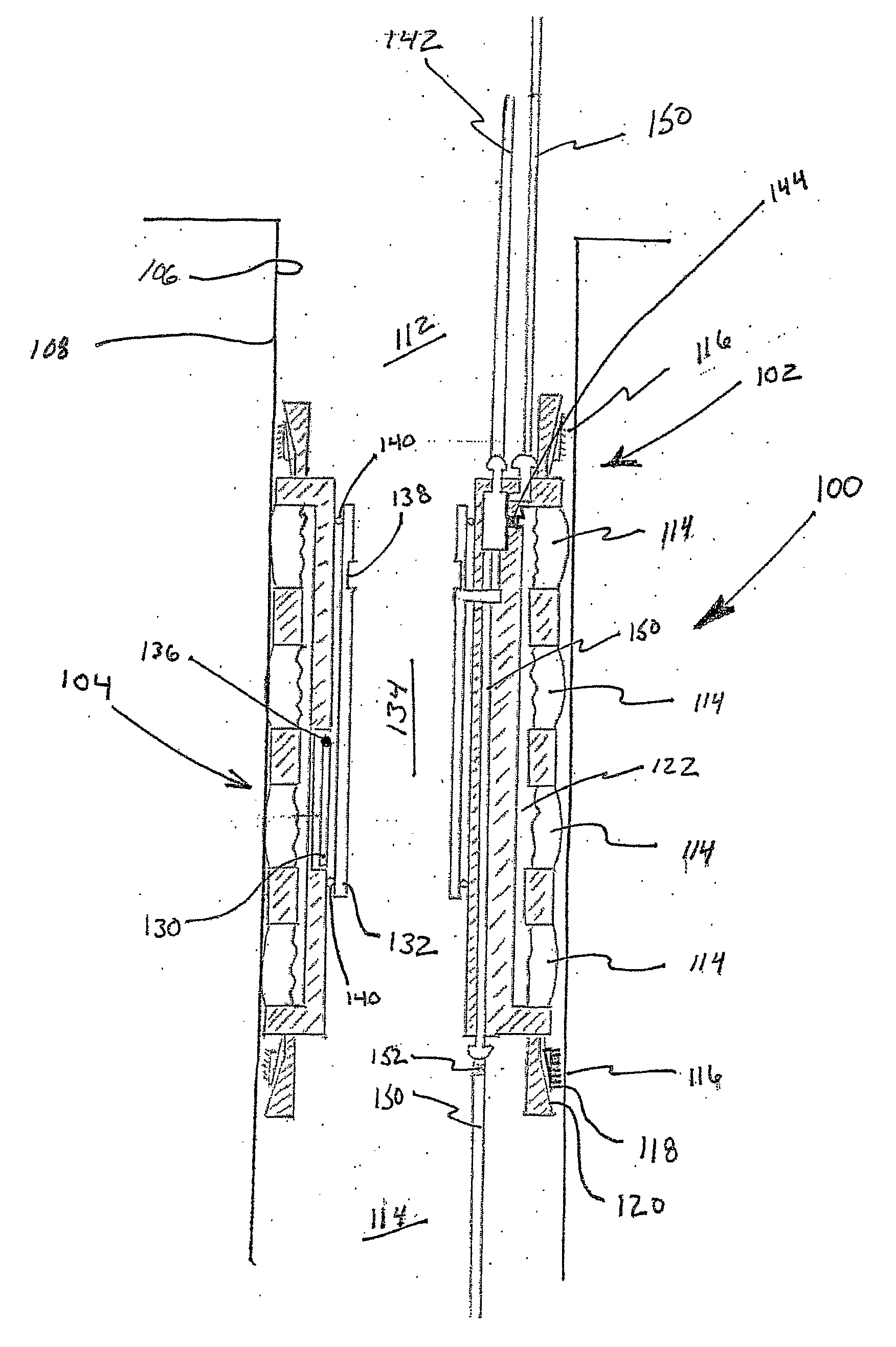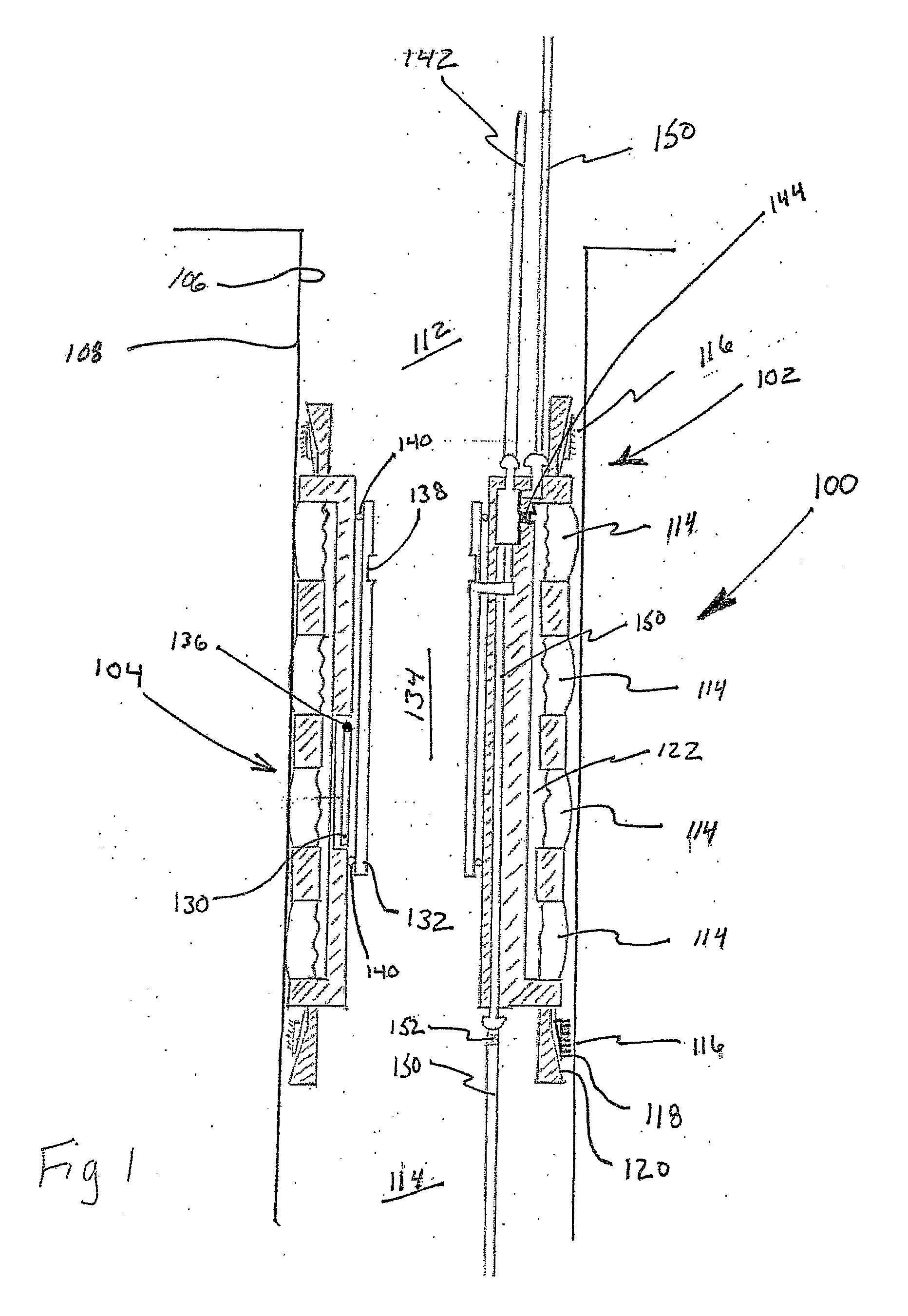Downhole Safety Valve Apparatus and Method
a safety valve and subsurface technology, applied in the direction of wellbore/well accessories, fluid removal, construction, etc., can solve the problems of obstructing the functioning and affecting the safety of the safety valv
- Summary
- Abstract
- Description
- Claims
- Application Information
AI Technical Summary
Benefits of technology
Problems solved by technology
Method used
Image
Examples
Embodiment Construction
[0016]Referring to FIG. 1, an embodiment for a safety packer 100 is shown. Safety packer 100 includes an anchor subassembly 102 and a safety valve subassembly 104 disposed within an inner bore 106 of a length of tubing 108 to selectively isolate a first zone 110 from a second zone 112. While safety packer 100 is expected to be used primarily within strings of production tubing, it should be understood by one of ordinary skill in the art that safety packer assembly 100 may be used with open wellbores, casing, coiled tubing, or any other application where a packer having an integral safety valve is desirable.
[0017]Anchor subassembly 102 preferably includes a packer element 114 and at least one set of anchor slips 116 to hold safety packer 100 in place within bore 106. Safety packer 100 is configured to be placed and actuated by any means known to one skilled in the art. In one mode, anchor slips 116 having biting surfaces 118 which are engaged into bore 106 by inclined planes 120 such...
PUM
 Login to View More
Login to View More Abstract
Description
Claims
Application Information
 Login to View More
Login to View More - R&D
- Intellectual Property
- Life Sciences
- Materials
- Tech Scout
- Unparalleled Data Quality
- Higher Quality Content
- 60% Fewer Hallucinations
Browse by: Latest US Patents, China's latest patents, Technical Efficacy Thesaurus, Application Domain, Technology Topic, Popular Technical Reports.
© 2025 PatSnap. All rights reserved.Legal|Privacy policy|Modern Slavery Act Transparency Statement|Sitemap|About US| Contact US: help@patsnap.com


